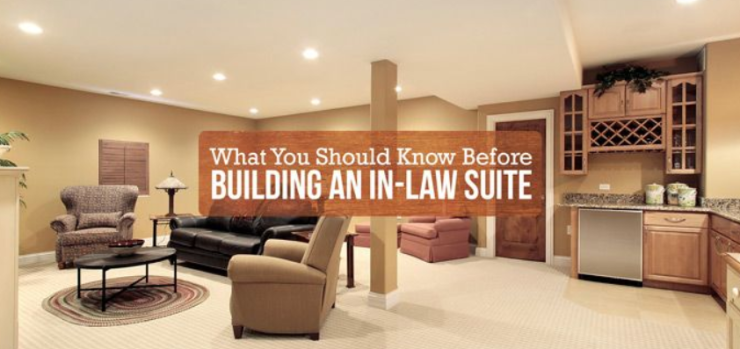Drywall Repair Services in NYC: Restore, Refresh, and Reinvent Your Space
Cracked walls, peeling corners, and water-damaged ceilings aren’t just eyesores—they’re signs your home or building needs attention. If you’re a...

With nearly one in five Americans now living in multigenerational households, building a private living space for aging parents or relatives is becoming more common. Rising costs of assisted living are prompting families to create independent spaces—known as in-law suites—right on their own property.
Instead of assigning them the upstairs guest room, many families are building fully functional in-law apartments that offer both comfort and independence.
An in-law suite—also known as a mother-in-law apartment or granny flat—is a private living area for a parent or relative, typically located within or adjacent to a family’s main residence. These spaces can be additions to the home, converted garages or basements, or even detached structures in the backyard.
If you're converting part of your existing home (like a bedroom, attic, or basement), expect to spend anywhere from $10,000 to $100,000, depending on the size, finishes, and plumbing/electrical work needed.
Building a separate unit in your backyard will typically cost between $40,000 and $125,000. These projects are more extensive and require architectural plans, foundation work, and utility hookups.
Though the upfront cost of building an in-law suite may seem high, it's often far less than long-term assisted living. According to Genworth’s latest Cost of Care Survey, the average price of a private nursing home room is about $108,000 per year. Even a semi-private room averages $94,900 annually. Over time, an in-law suite can be the more economical—and emotionally rewarding—choice.
Before you begin, contact your city’s building department. Some key things to research:
• Whether in-law suites are allowed in your area
• If you can include a full kitchen or need to limit it to a kitchenette
• Requirements for separate entrances
• Sewer and water connection regulations
• Parking accommodations for the new resident
Tip: Detached units often face more zoning restrictions than attached ones.
The best place for your suite depends on space, privacy, and accessibility. Consider:
• Garage conversion: Great if already insulated and heated
• Basement remodel: Offers privacy and can be made cozy with proper lighting
• Spare bedroom + bath: Ideal for simpler renovations
• Attic conversion: A creative use of underutilized space
• Home addition: Customizable, but most expensive
• Backyard guest house or shed conversion: Best for full separation and privacy
Pro Tip: Keep the layout open and minimal to ensure safety and comfort for elderly family members.
Installing separate water, gas, and electric lines lets you:
• Shut off utilities when the space isn’t in use
• Simplify billing if the suite is ever rented out in the future
Think long-term. Your in-laws may plan to age in place, so their space should be accessible and safe.
Must-Have Features:
• Walk-in shower with grab bars
• Non-slip flooring
• Wider doorways for wheelchair access
• Pull-out storage in kitchens and bathrooms
• Lever-style door handles
• Adequate lighting and easy-to-use switches
Need more ideas? Explore our guide on remodeling for aging in place.
Choose a contractor with experience building in-law suites and preferably someone who is a Certified Aging-in-Place Specialist (CAPS). These professionals understand the unique needs of older adults and can recommend smart design choices.
To find a qualified pro, visit the National Association of Home Builders website and search for CAPS-certified contractors in your area.
Adding an in-law suite is a major project—but it’s also a meaningful investment in your family’s comfort and future. Whether you’re planning a cozy conversion or a full backyard build, thoughtful planning and the right team can make the process smooth and rewarding.
With nearly one in five Americans now living in multigenerational households, building a private living space for aging parents or relatives is becoming more common. Rising costs of assisted living are prompting families to create independent spaces—known as in-law suites—right on their own property.